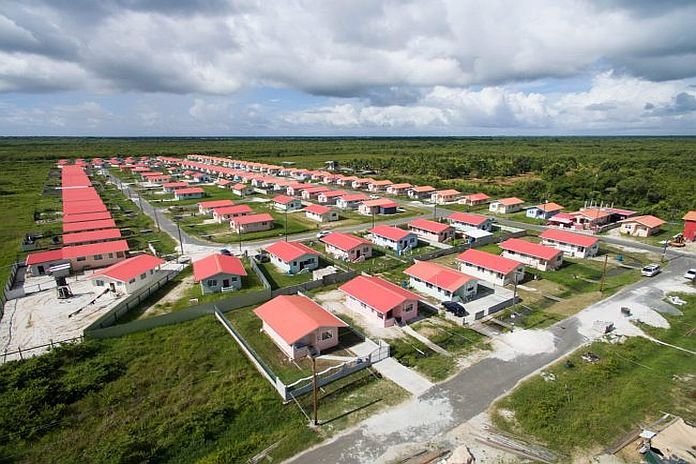Close

The Government of Guyana is making substantial progress toward its goal of creating widespread access to affordable housing. A key commitment—to allocate 50,000 low-income house lots—is already over 80% fulfilled, with more than 40,000 lots distributed to citizens. Another 25,000 lots are slated for delivery in 2025, advancing the government’s mission to make homeownership a reality for thousands more families (Department of Public Information).
Region 4 has seen major benefits from this housing rollout. Rapid development in communities such as Prospect, Great Diamond, Farm, and Little Diamond is underway, with the necessary infrastructure—roads, electricity, and water—being installed to support thriving residential areas. These efforts, led by the Ministry of Housing and Water, include regular land allocation exercises designed to meet the growing demand (Ministry of Housing and Water).
Beyond just delivering plots of land, the initiative is designed to foster long-term stability and prosperity. The government’s approach recognizes that homeownership builds financial security, supports family development, and stimulates the wider economy. Access to titled house lots also opens the door to housing finance, helping citizens build or improve their homes.
To ensure these opportunities remain within reach for low-income households, the government has kept prices affordable and introduced manageable payment plans. It has also digitized parts of the application and allocation process, streamlining services and boosting transparency (Guyana Chronicle).
The commitment to deliver the remaining 25,000 lots in 2025 remains strong. According to the Ministry of Housing and Water, the overarching goal isn’t just to meet a numerical target, but to uplift citizens by providing them with the security and dignity of owning land (Stabroek News).
This initiative stands as a clear example of development that directly benefits the people. By turning land access into a pathway for opportunity, the government is not just meeting a promise—it’s reshaping lives and building a more secure and inclusive future for all Guyanese.

The Guyana Project is an independent media platform delivering fact-checked, ground-level reporting on politics, economy, and public life in Guyana. With a focus on transparency and development, we bring unfiltered news and thoughtful analysis to help shape a more informed, forward-looking nation.


Lorem Ipsum is simply dummy text of the printing and typesetting industry. Lorem Ipsum has been the industry’s standard dummy text ever since the 1500s, when an unknown printer took a galley of type and scrambled it to make a type specimen book. It has survived not only five centuries, but also the leap into electronic typesetting, remaining essentially unchanged. It was popularised in the 1960s with the release of Letraset sheets containing Lorem Ipsum passages, and more recently with desktop publishing software like Aldus PageMaker including versions of Lorem Ipsum.
t is a long established fact that a reader will be distracted by the readable content of a page when looking at its layout. The point of using Lorem Ipsum is that it has a more-or-less normal distribution of letters, as opposed to using ‘Content here, content here’, making it look like readable English. Many desktop publishing packages and web page editors now use Lorem Ipsum as their default model text, and a search for ‘lorem ipsum’ will uncover many web sites still in their infancy. Various versions have evolved over the years, sometimes by accident, sometimes on purpose (injected humour and the like).
Contrary to popular belief, Lorem Ipsum is not simply random text. It has roots in a piece of classical Latin literature from 45 BC, making it over 2000 years old. Richard McClintock, a Latin professor at Hampden-Sydney College in Virginia, looked up one of the more obscure Latin words, consectetur, from a Lorem Ipsum passage, and going through the cites of the word in classical literature, discovered the undoubtable source. Lorem Ipsum comes from sections 1.10.32 and 1.10.33 of “de Finibus Bonorum et Malorum” (The Extremes of Good and Evil) by Cicero, written in 45 BC. This book is a treatise on the theory of ethics, very popular during the Renaissance. The first line of Lorem Ipsum, “Lorem ipsum dolor sit amet..”, comes from a line in section 1.10.32.